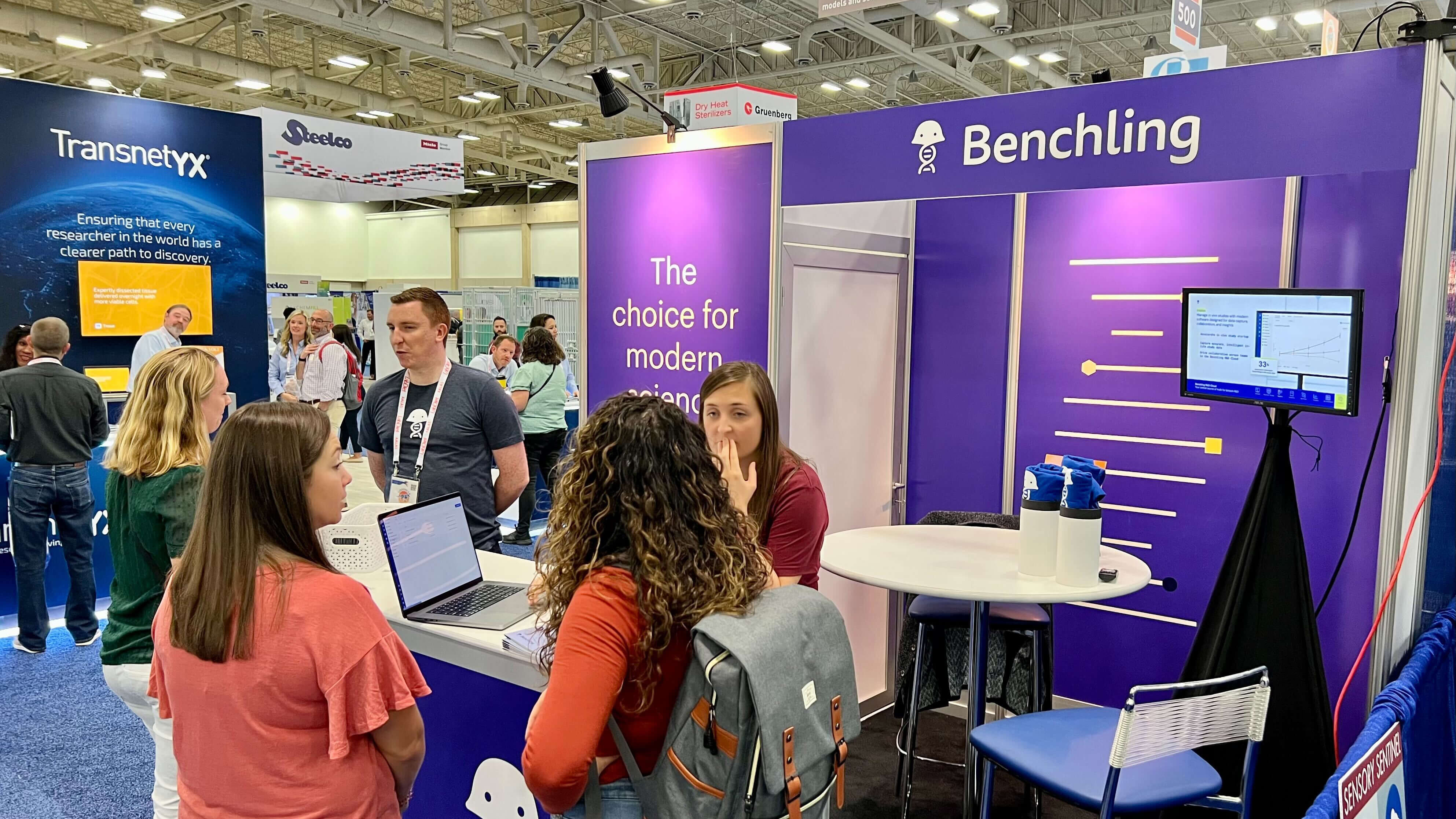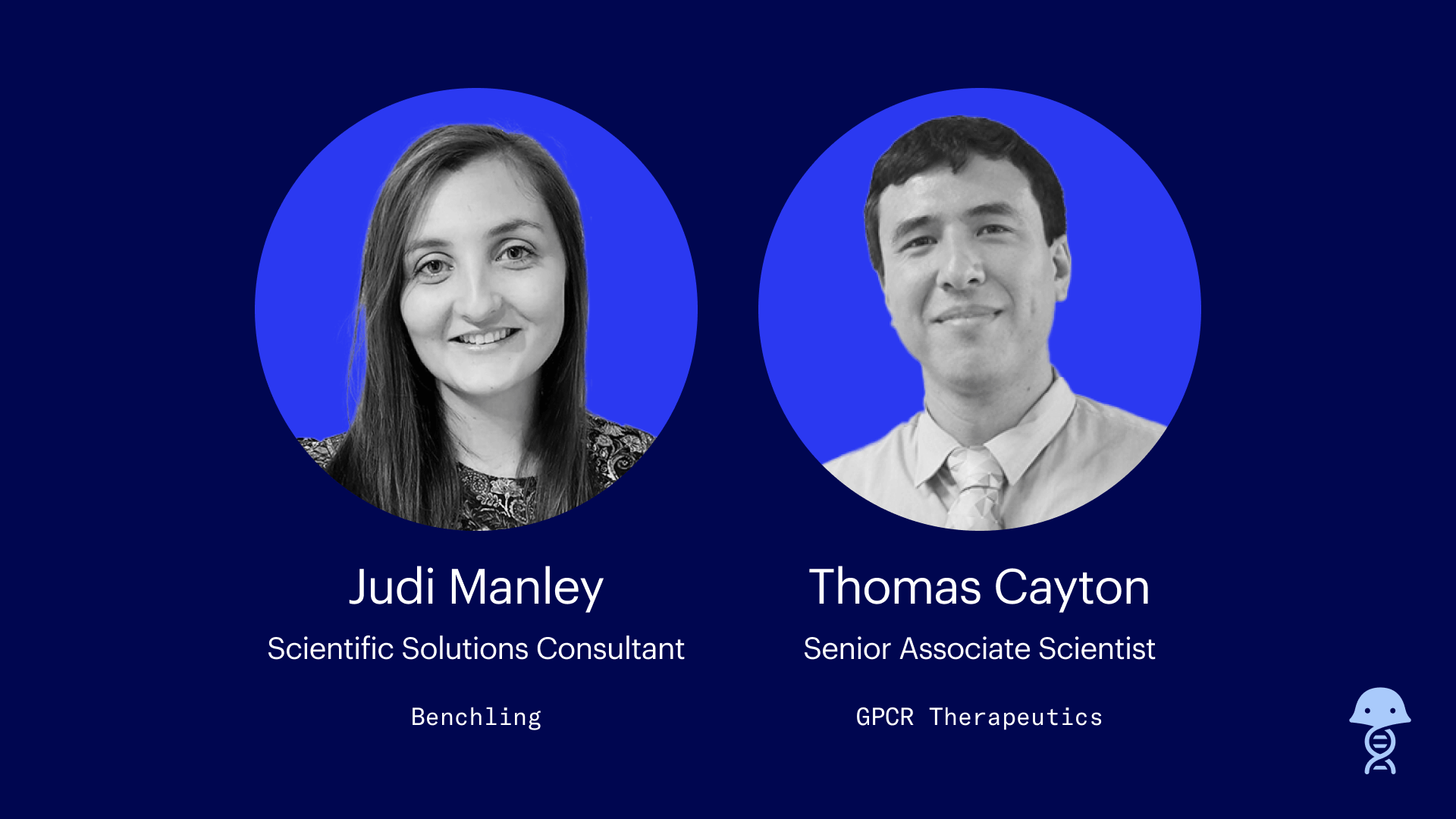3 trends fueling the future of in vivo research from AALAS 2022

In vivo research practices are changing every day, with digitization shaping the way we study oncology, neurology, cardiovascular, diabetes, infectious diseases, and beyond. This month when Benchling headed to Louisville for the American Association of Lab Animal Sciences Congress (AALAS) 2022 annual meeting, it was incredible to see so many innovators come together to share learnings and drive the future of in vivo research forward.
The Benchling team had the chance to present on implementing change in the vivarium with our customer, GPCR Therapeutics, and talk with scientists at our booth. Three key trends stood out from conversations throughout the day: an eagerness to innovate, a desire to digitize lab processes, and a need to connect different lab technologies.
Readiness for innovation
Just walking through the rows of booths at AALAS, it was clear that teams are eager to experiment with the latest technologies in the market. Booth and networking discussions centered around adopting new equipment and products as quickly as possible to stay ahead of the ever-changing innovation curve. From temperature-sensing RFID chips, to 3D and thermal tumor imaging systems, to the latest in transgenic mouse models, the array of tools out there to help teams work smarter and faster is ever-increasing, and companies are looking to take advantage of them.
Digitizing lab processes
Many scientists and technicians showed how they’re digitizing lab processes to overcome data repeatability issues and speed up manual processes. This requires digital tools that can connect parts of the vivarium while maintaining the highest levels of 3Rs compliance (Reducing, Refining, and Replacing animals in scientific discovery).
Capturing, organizing, and analyzing the data is a challenge for many scientists. It’s also hard to capture data in a structured and objective way — especially when there are multiple scientists collaborating on a data set. Labs are looking to remove manual data entry, which leads to human errors and adds steps into a process where time is critical.
Connecting different technologies
Many scientists expressed that the lack of interoperability of lab technologies is a challenge. There are tools and softwares for animal breeding and logging, animal identification, data capture, in-life measurement and sample handling, and more. And while each one aims to individually improve the speed, consistency, and accuracy of the scientific process, it’s only truly efficient when those tools integrate seamlessly together. In fact, having too many disconnected tools can slow your team down even more. By unifying technologies used in the lab, teams are increasing output, improving staff morale, and maintaining best practices for humane animal management.
Powering in vivo innovation
From harmonizing data, to improving collaboration and strengthening digital foundations, the innovation happening with in vivo research is inspiring. We’re looking forward to continuing the conversation with the scientists we met and can’t wait to reconnect at AALAS 2023 in Salt Lake City to see how much progress we’ve made together!
Watch our AALAS 2022 talk
Watch the recording from our AALAS 2022 talk on implementing change in the vivarium featuring Benchling customer GPCR Therapeutics.
Powering breakthroughs for over 1,300 biotechnology companies, from startups to Fortune 500s



